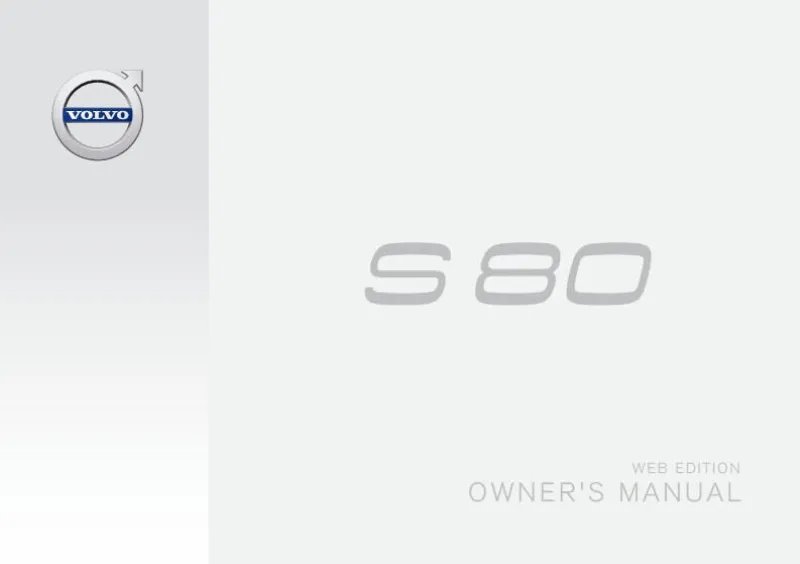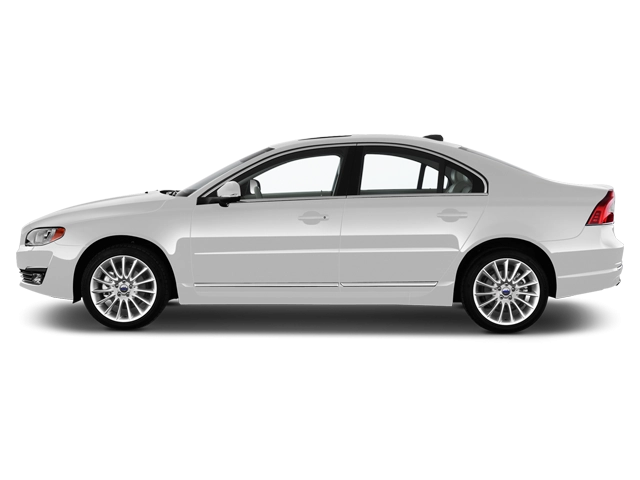2016 Volvo S80 Owner's Manual

Table of Contents
2016 Volvo S80 Overview
Introduction
The 2016 Volvo S80 is a quintessential blend of elegance, performance, and safety, embodying the luxurious spirit of Swedish engineering. As a flagship sedan, it delivers a serene driving experience while boasting advanced technologies and premium materials. With its iconic design and solid build quality, the S80 stands out in the competitive luxury sedan market, appealing to drivers who prioritize comfort, sophistication, and reliability.
Powertrains
The 2016 S80 offers a selection of robust powertrains to suit diverse driving preferences. The base engine is a 2.5-liter turbocharged inline-five, generating 250 horsepower and 266 lb-ft of torque, smoothly paired with a six-speed automatic transmission. For those seeking enhanced performance, Volvo's 3.2-liter inline-six is available, producing 280 horsepower and offering refined acceleration. Additionally, the T6 AWD variant utilizes a supercharged and turbocharged 3.0-liter inline-six engine, providing a thrilling 316 horsepower and exceptional all-wheel-drive traction.
Trims
The 2016 Volvo S80 comes in several trims, including the base 2.5T, the luxurious 3.2, and the performance-oriented T6 AWD. Each trim offers distinctive features and a plush interior environment. The 2.5T is well-equipped with standard leather upholstery, dual-zone climate control, and a premium audio system. The 3.2 enriches this experience with added amenities like seat memory, navigation, and advanced safety features. The T6 AWD is the pinnacle of performance and luxury, featuring sport-tuned suspension and cutting-edge infotainment technologies.
Features
Standard features on the 2016 S80 include premium leather seating, a panoramic sunroof, and a comprehensive suite of safety technologies like blind-spot monitoring and adaptive cruise control. The intuitive Sensus infotainment system offers seamless smartphone integration, navigation, and a high-quality audio system. Optional features enhance the experience further, with upgrades available for sound systems, adaptive headlights, and ventilated front seats.
Owners Manual
The owner's manual for the 2016 Volvo S80 provides invaluable information about the vehicle's features, maintenance schedules, and operating instructions. It serves as a comprehensive guide to ensure drivers understand the functionalities, while also emphasizing safety precautions and troubleshooting tips. Accessing the owner's manual can significantly enhance the ownership experience, ensuring that every aspect of the S80 is utilized to its full potential.
User manual download
The Volvo S80 owner manual for the 2016 model year is to be found in PDF downloadable format on this page. The owner manual for the model year 2016 is free and in English, but the repair manuals are usually not easy to get and may cost more.
Manual Questions
Fill the form below and someone will help you!

